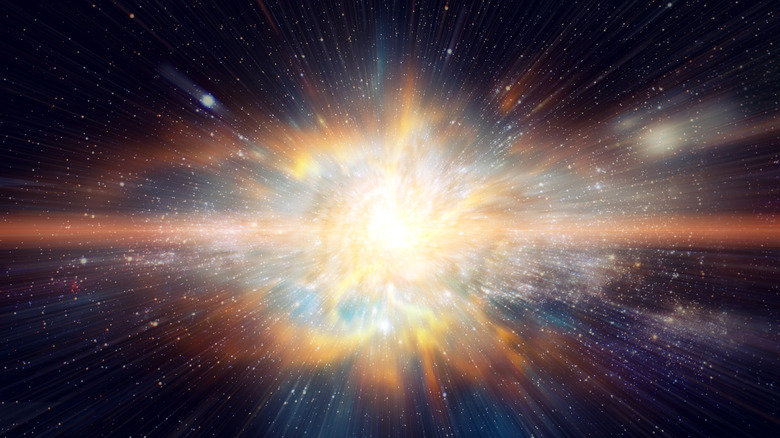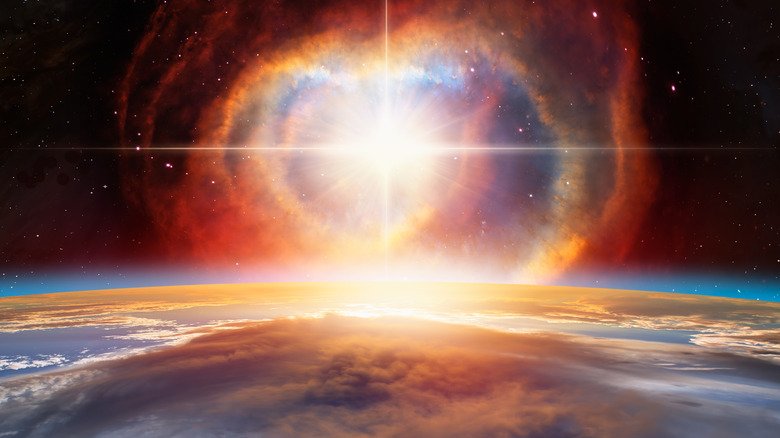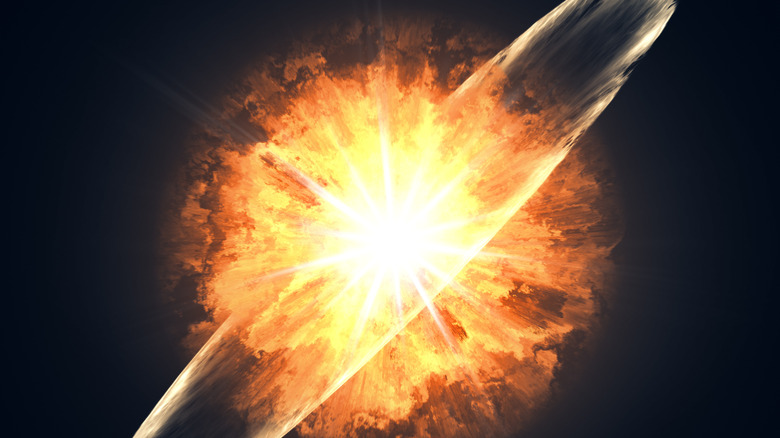Why The Brightest Gamma Ray Ever Recorded Is Being Called The BOAT
You may already be familiar with the phrase GOAT, meaning the "greatest of all time," but now it's time to learn about BOAT, brightest of all time, the nickname astronomers have given to a recently-observed gamma ray burst. Scientific observations of the bright burst of energy, named GRB 221009A, were published in October, and this gamma activity may truly be the BOAT. According to Brendan O'Connor, lead researcher of the team that studied GRB 221009A and an astrophysicist at the University of Maryland and George Washington University, "it's a once-in-a-century event, maybe once in 1,000 years" (via Smithsonian Magazine).
Gamma ray bursts like GRB 221009A are some of the strongest explosions in our universe, and may be responsible for creating black holes, according to Space.com. These explosions give off intense amounts of energy, which makes it easy to detect them with the right equipment. That is exactly why the researchers who observed this gamma ray burst were able to find evidence of it at two astronomical observatories and multiple detectors worldwide (via Scientific American).
The gamma ray burst's brightness may be due to its proximity to Earth
One of the contributors to this newly discovered gamma ray burst's brightness is its distance from Earth. According to Science News, this burst was a couple billion light-years away. This may seem impossibly far, but is actually very close to Earth compared to most gamma ray bursts, which tend to be spotted at distances around 10 billion light-years away.
GBA 221009A was so close to Earth that it temporarily changed the conditions of the upper atmosphere, according to Scientific American. The burst ionized atoms, making its presence detectable by satellites. The research paper, announced in a NOIR Lab press release, specified that the impact on Earth's upper atmosphere was only mild and brief, but still a reminder of how powerful and intense this gamma ray burst is at 2.4 million light-years away.
Astronomers believe the burst came from a supernova explosion
So what exactly caused this newly-detected gamma ray burst? Researchers believe it may have come from a supernova. According to Space.com, supernovae are the explosions of material from stars. Not all stars end their lives by going supernova, but those that are large enough to do so send their own remains out into space in a fiery explosion.
EarthSky reports that the majority of gamma ray bursts come from either a supernova or hypernova, which is a type of very energetic supernova. The reason some supernovae appear as gamma ray bursts and others appear as normal supernovae has to do with their position relative to Earth. According to Scientific American, the energy from a supernova tends to be tightly concentrated. When a star goes supernova, that tightly concentrated energy bursts out in thin beams. These beams of gamma ray energy can only be detected if they are aimed directly at Earth, which is why we don't detect gamma ray bursts from every supernova. This is the most likely scenario for GBR 221009A. This one-in-a-lifetime gamma ray burst may allow researchers to reevaluate what we know about these bursts and the supernovae that cause them.


